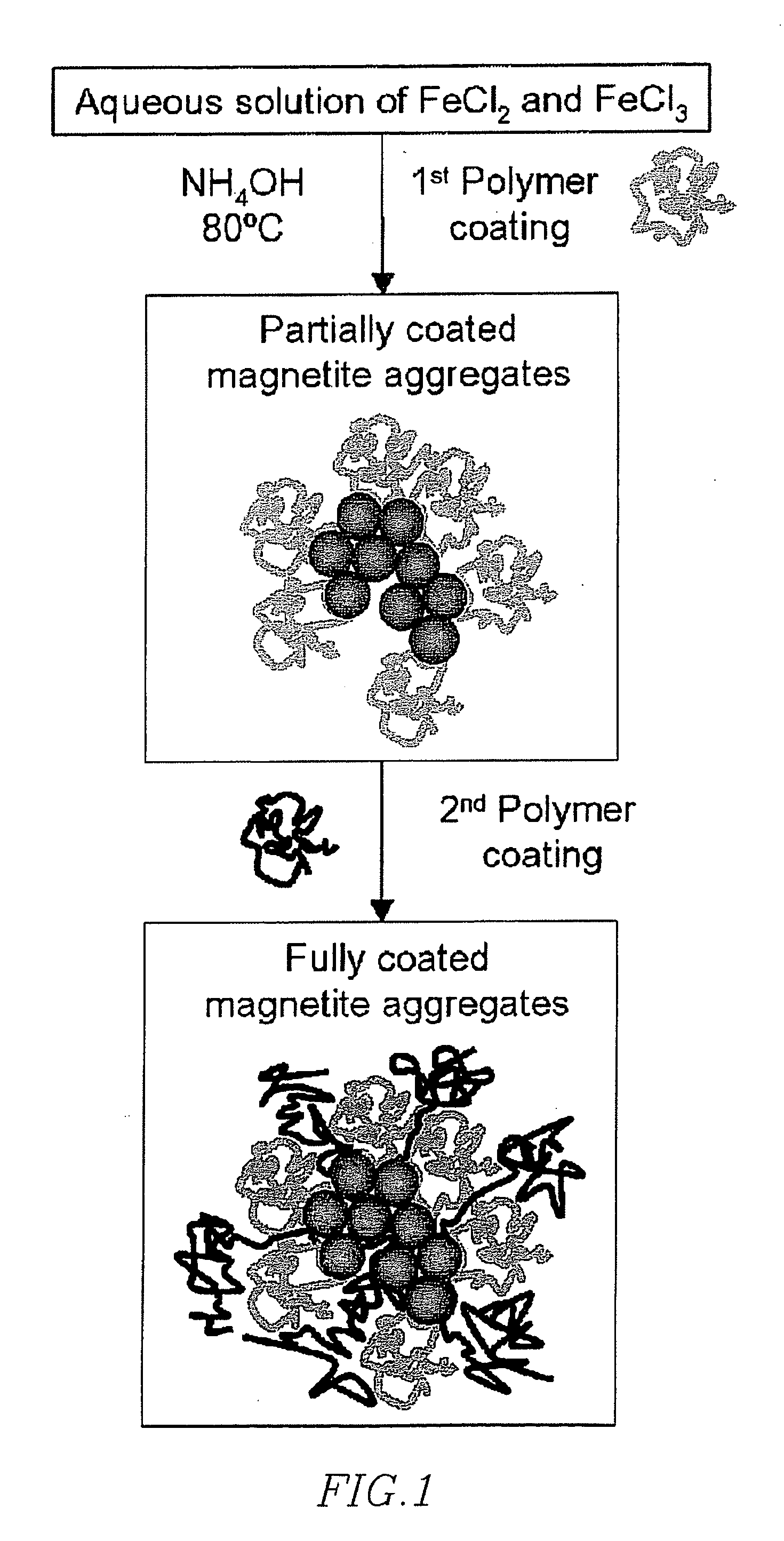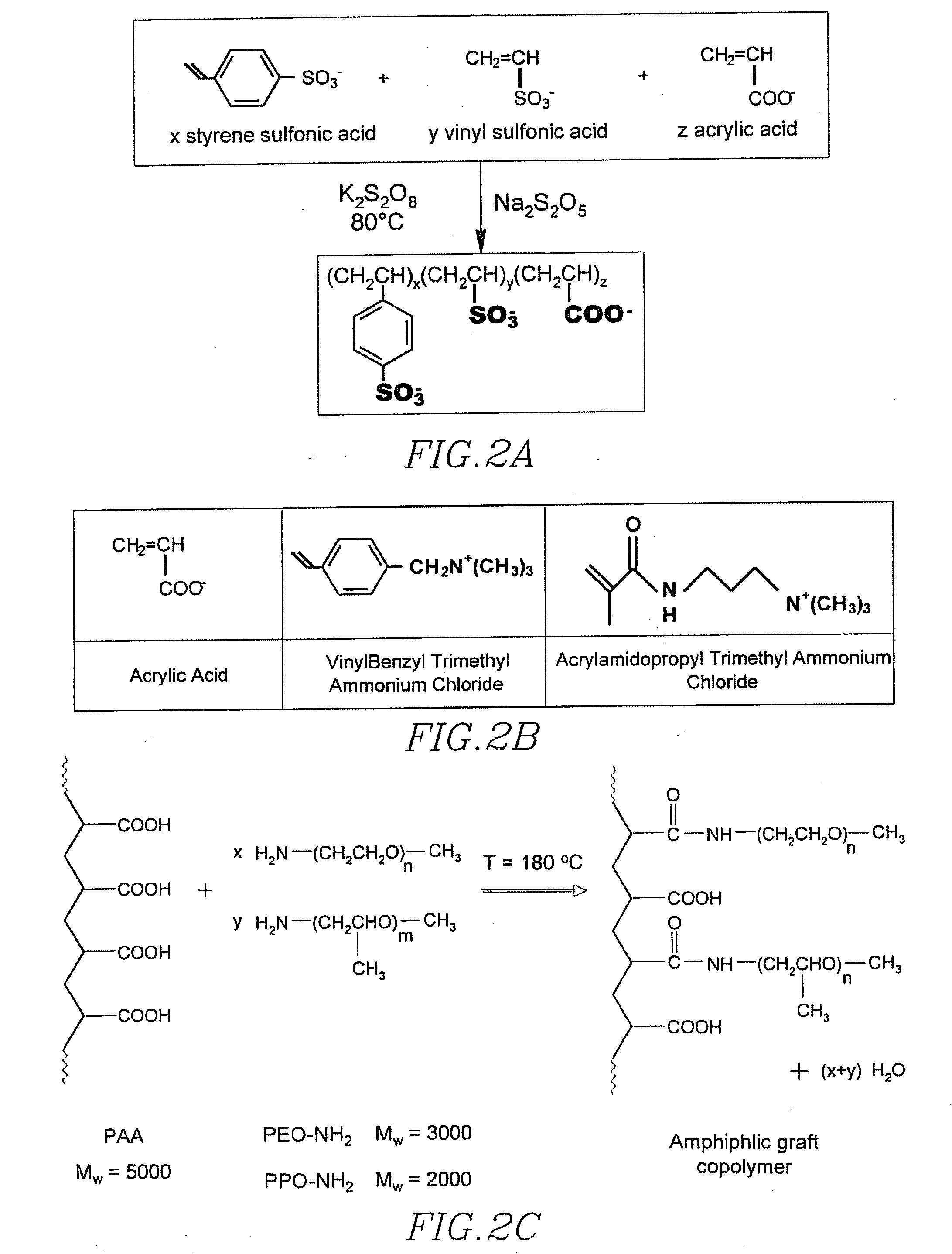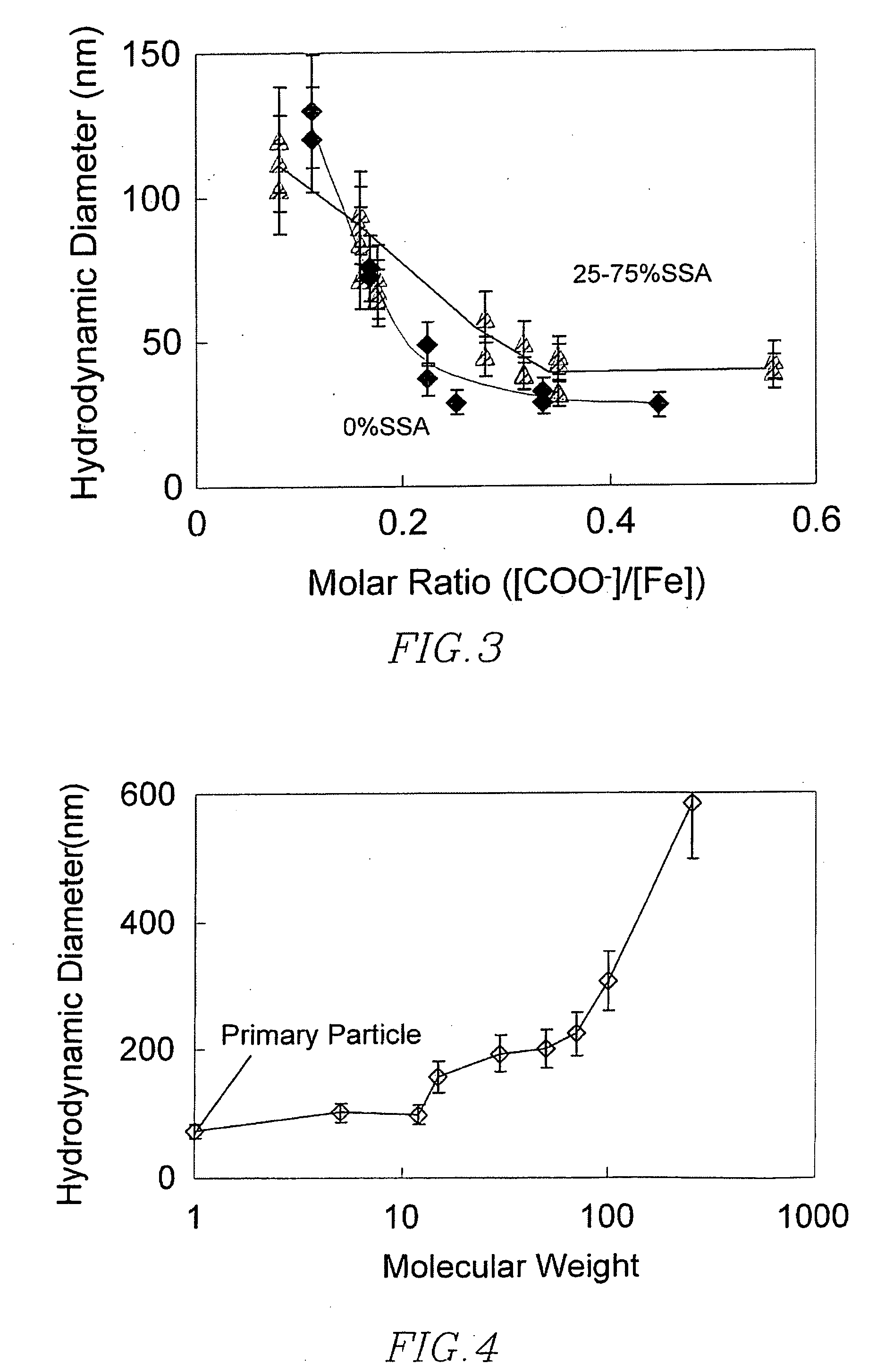Multi-polymer-coated magnetic nanoclusters
a magnetic nanocluster and polymer coating technology, applied in the field of compound and method for protein purification, can solve the problems of poor mass transfer, short contact, inability to handle particulate matter, etc., and achieve the effect of high ionic strength
- Summary
- Abstract
- Description
- Claims
- Application Information
AI Technical Summary
Benefits of technology
Problems solved by technology
Method used
Image
Examples
example 1
Preparation of Polymer Coated Magnetic Nanoclusters
[0154] Magnetic nanoparticles were produced by chemical coprecipitation. 2.35 grams of iron (III) chloride hexahydrate and 0.86 g of iron (II) chloride tetrahydrate was added to 40 mL of deoxygenated water. The deoxygenation was achieved by bubbling nitrogen in a vigorously stirred 100 mL three-necked flask. The resulting Fe3+ and Fe2+ concentrations were 0.22 and 0.11M respectively, resulting in the required 2:1 ratio for magnetite (Fe3O4) production.
[0155] The nitrogen bubbling was ceased and the mixture was then heated over a range in temperature from 50 to 90° C., where 80° C. was found to be a desirable working temperature. A mixture of 5 mL of 28% ammonium hydroxide and various amount of polymer in water to a total added volume of 10 mL, typically 7 mmol of monomer units, was added. After 15 minutes, additional polymer, typically 4 mmol monomer basis, was added for additional coating. The reaction was allowed to proceed for ...
example 2
Magnetic Nanocluster Size Control as a Function of First Polymer Attachment Materials and Experimental Methods
[0167] Magnetic nanoparticles were prepared as follows: 2.35 grams of iron (III) chloride hexahydrate and 0.86 g of iron (II) chloride tetrahydrate was added to 40 mL of deoxygenated water. The resulting Fe3+ and Fe2+ concentrations were 0.22 and 0.11M respectively. The mixture was then heated to 80° C.
[0168] First polymers used for the formation of various multi-polymer coated magnetic nanoparticles is as listed in Table 4.
TABLE 4First Polymers Used For Formation Of Multi-Polymer CoatedMagnetic Nanoparticles:Amount ofPolymerPolymer(in grams)MWComposition0.4-1.410,00025% Acrylic acid, 50% Vinyl Sulfonic acid,25% Styrene Sulfonic acid0.4-1.617,00025% Acrylic acid, 25% Vinyl Sulfonic acid,50% Styrene sulfonic acid0.4-1.411,00050% acrylic acid, 25% vinyl sulfonic acid,25% styrene sulfonic acid0.5-1.825,00025% Acrylic acid, 75% Styrene sulfonic acid0.6-1.22,00020% Acrylic ac...
example 3
Magnetic Nanocluster Size Control as a Function of Second Polymer Attachment Materials and Experimental Methods
[0172] Magnetic nanoparticles were prepared as in Example 2, and coated with 0.8 grams of 10 kDa-sized first polymer, composed of 25% Acrylic acid, 50% Vinyl Sulfonic acid, and 25% Styrene Sulfonic acid, via method described. Second polymer coating was similarly accomplished, in each case using 0.3 grams of the polymer, with varied molecular weights, as listed in Table 5, as well as samples without second polymer coating. Dynamic light scattering was accomplished as in Example 2.
TABLE 5Second Polymers Used For Formation Of Multi-Polymer CoatedMagnetic Nanoparticles:Polymer MWComposition5,000polyacrylic acid8,000polyacrylic acid15,000polyacrylic acid30,000polyacrylic acid50,000polyacrylic acid70,000polyacrylic acid100,000polyacrylic acid250,000polyacrylic acid
Results
[0173] When the molecular size of the secondary coating was relatively small (<15 kDa), the size of the cl...
PUM
| Property | Measurement | Unit |
|---|---|---|
| size | aaaaa | aaaaa |
| size | aaaaa | aaaaa |
| size | aaaaa | aaaaa |
Abstract
Description
Claims
Application Information
 Login to View More
Login to View More - R&D
- Intellectual Property
- Life Sciences
- Materials
- Tech Scout
- Unparalleled Data Quality
- Higher Quality Content
- 60% Fewer Hallucinations
Browse by: Latest US Patents, China's latest patents, Technical Efficacy Thesaurus, Application Domain, Technology Topic, Popular Technical Reports.
© 2025 PatSnap. All rights reserved.Legal|Privacy policy|Modern Slavery Act Transparency Statement|Sitemap|About US| Contact US: help@patsnap.com



